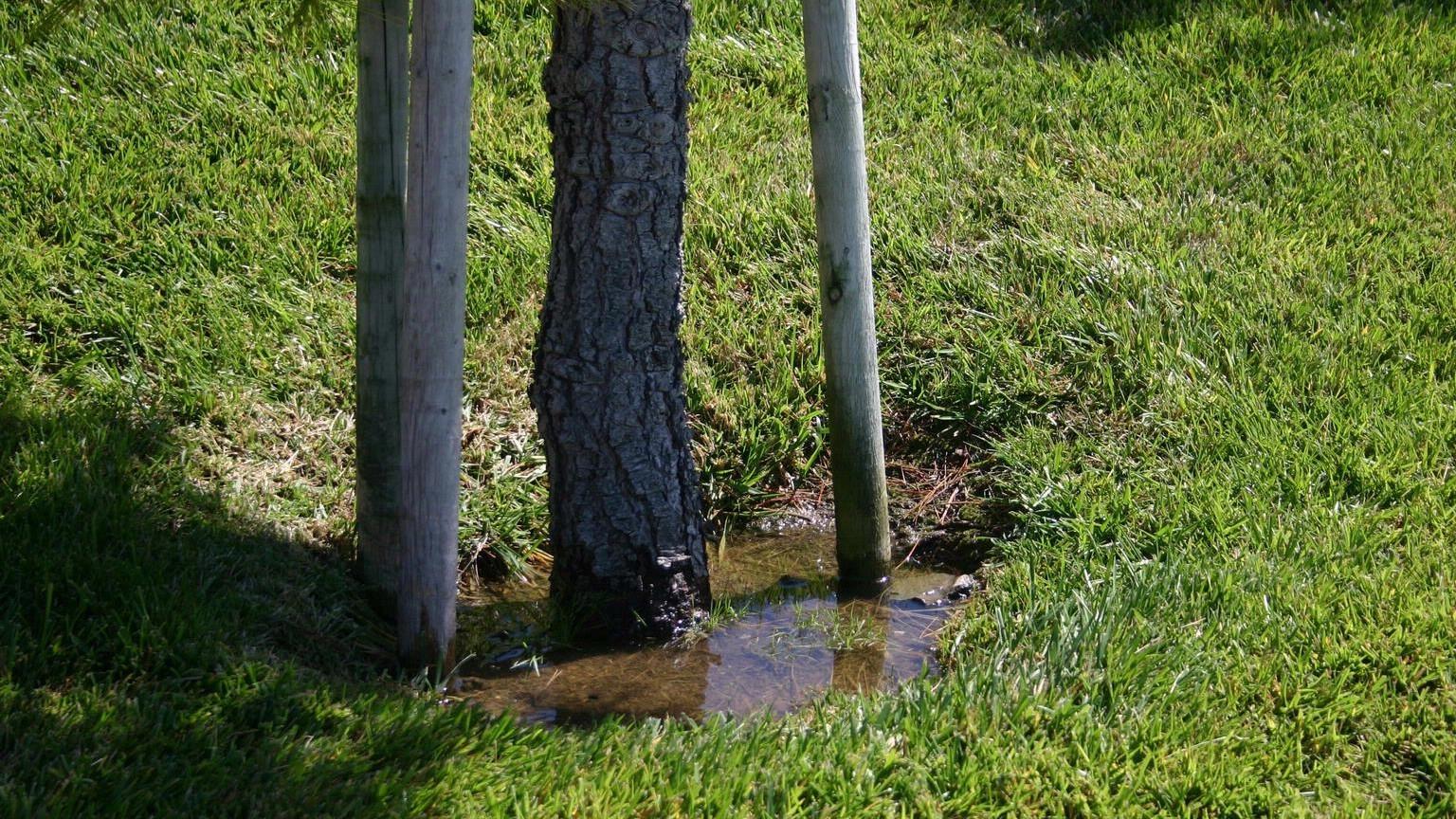Planting too deeply
- A planting depth of only one-inch too deep can cause trouble.
- It is not uncommon to see trees planted as much as three or more inches too deep with mulch piled on top adding to the problem.
- Deep planting causes bark deterioration at the soil line, which can eventually kill the plant.
- It usually takes a few seasons for a tree or shrub to die from this. Therefore, residents typically do not associate the decline of a tree with how it was planted.
Symptoms of excessively deep planting
- Some new growth may develop each spring, only to die-off during the stress of summer.
- Advanced symptoms of depth-related stress are cankers and deep cracking of the bark. A canker is an area of dead tissue on a woody stem. Some shallow cracking of bark is normal for many trees as the trunk grows but there is a problem if the bark is also peeling near the cracking.
- A tree may survive until fall but may not survive the winter because of insufficient storage of food reserves caused by the damaged bark.
- Deeply planted trees tend not to be very vigorous and look like they are struggling to grow.
- If the root flare is not visible then be suspicious of deep planting or another problem such as girdling roots.
Management
- A properly planted and established tree trunk flares at the base or the soil line where it joins the root system.
- If the tree or shrub was recently planted too deeply it can be lifted and replanted.
- To avoid the tree settling excessively in future plantings, do not loosen the soil at the bottom of the planting hole.
- Root collar excavation, which is the removal of excess soil and mulch around the root collar (base of the tree), can sometimes be helpful. Carefully remove the excess mulch or soil from the circumference of the trunk to the point where the trunk flares out into root growth. Arborists can perform root collar excavation by using an air spade, a special tool powered by an air compressor, which causes minimal root disturbance. The procedure is recommended for valuable or specimen trees.
